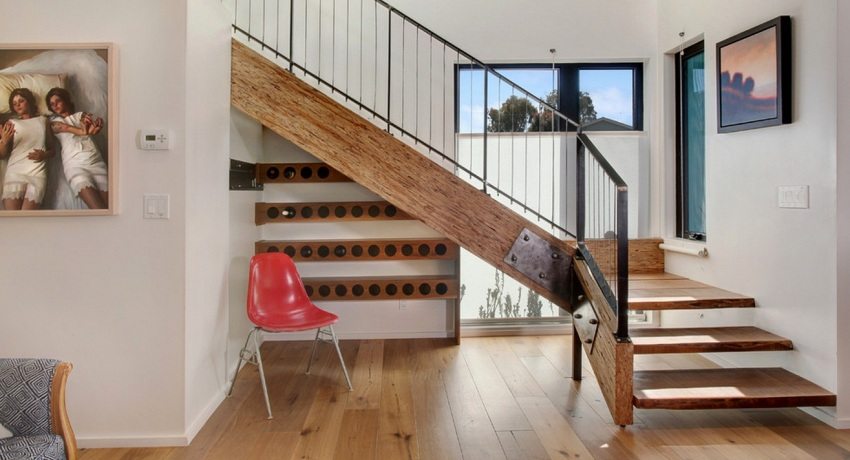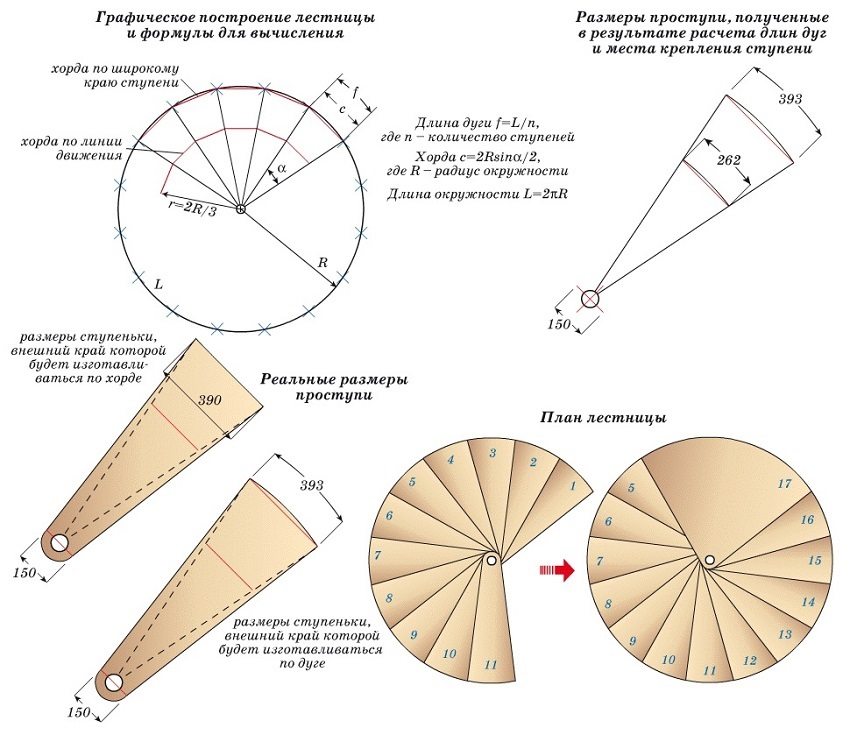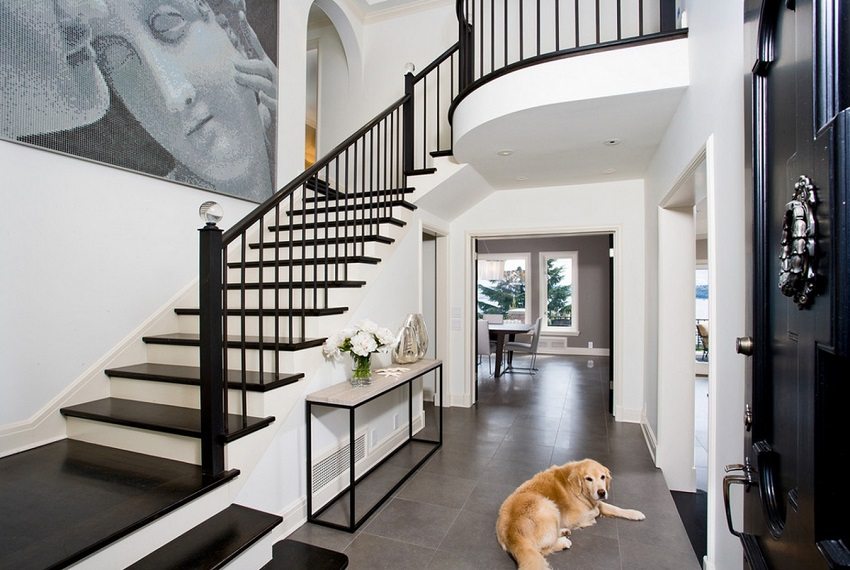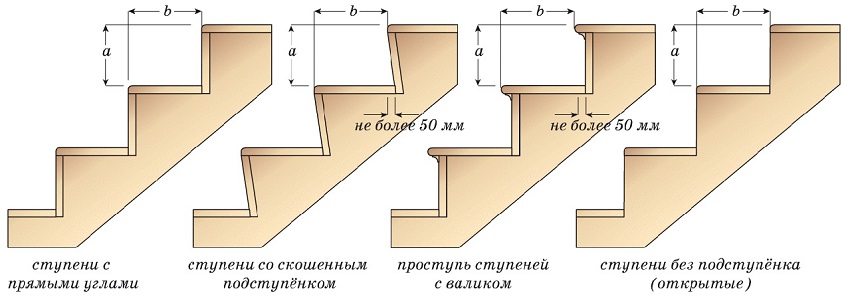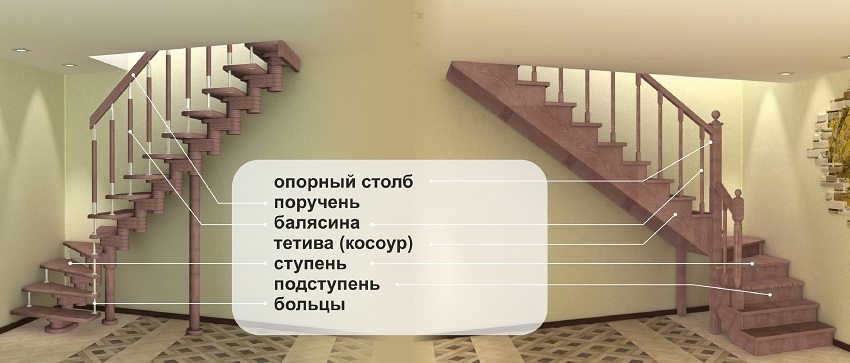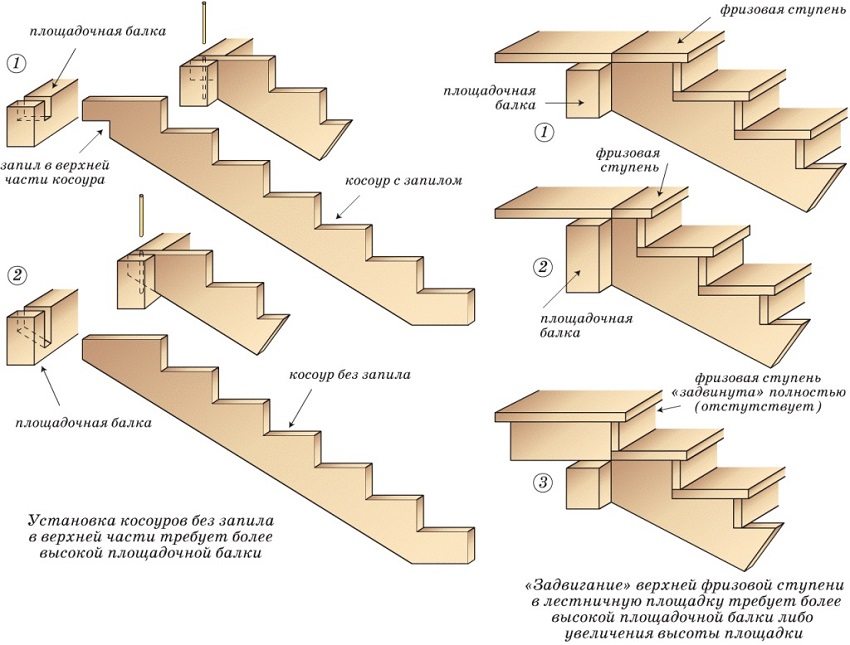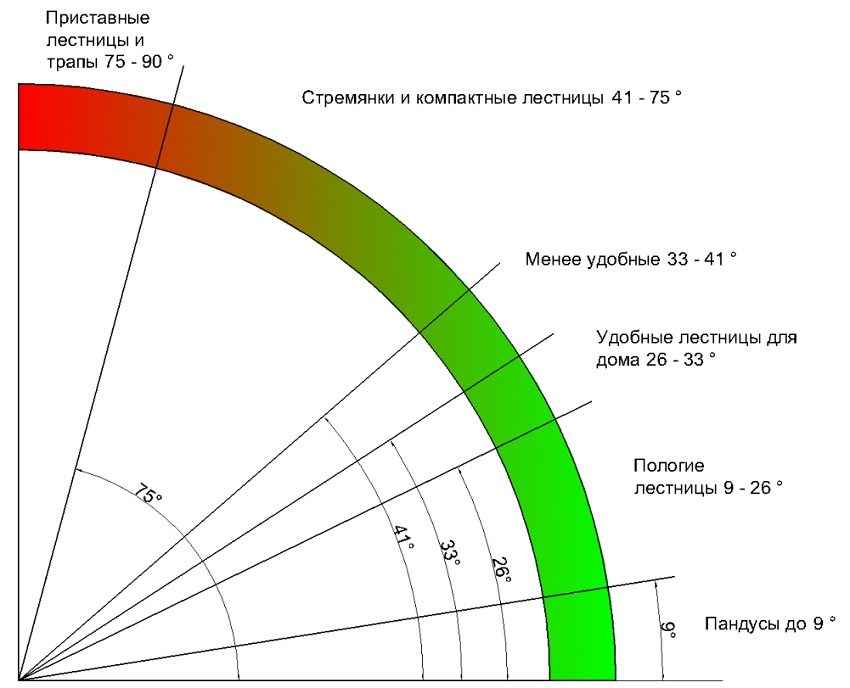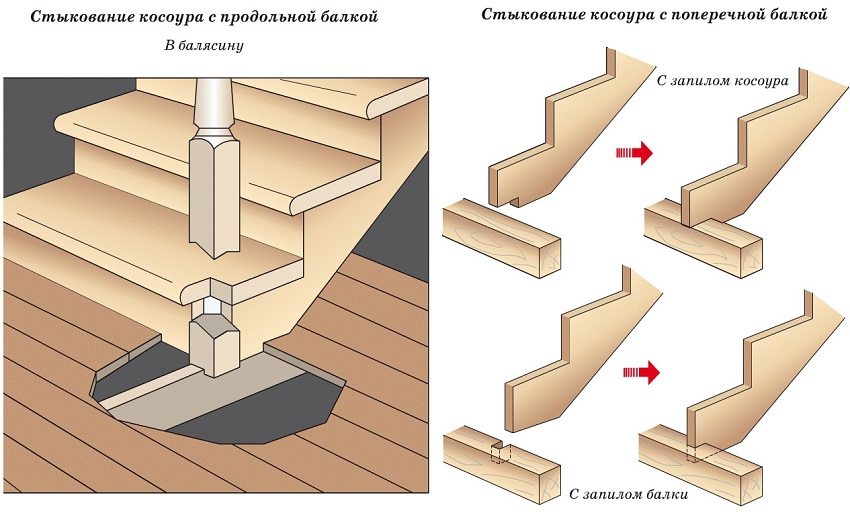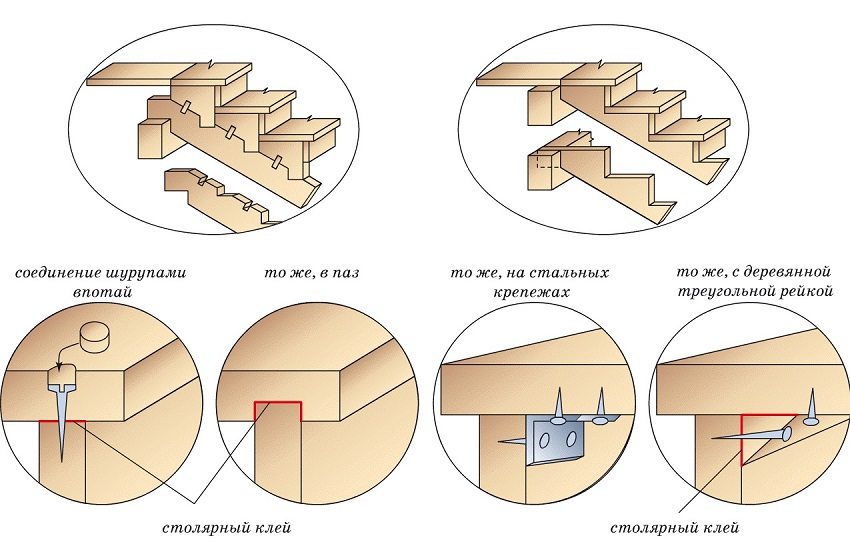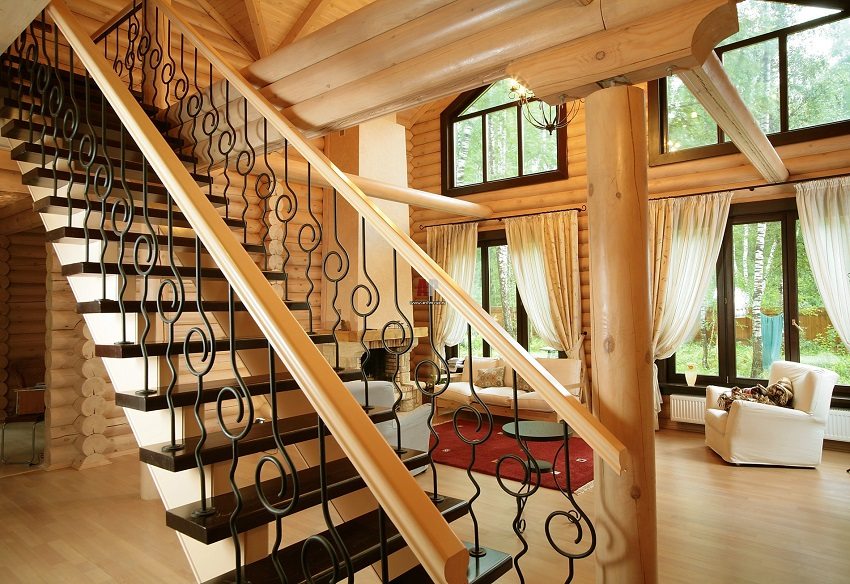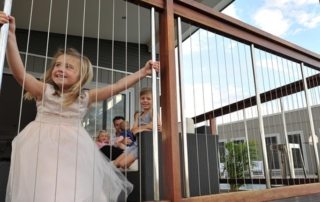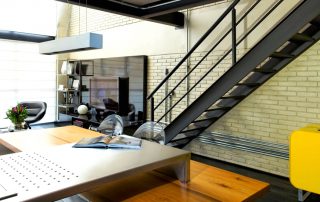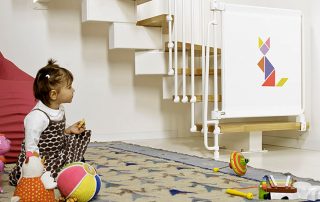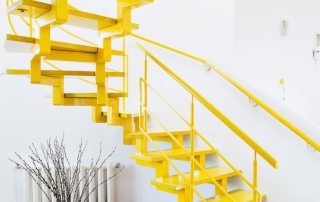An indispensable attribute two-storey cottages and country houses is a staircase. The design of the stairs, in addition to the function of connecting different levels of the room, also has a decorative purpose. The systems are made of different materials to match the general style of the interior of the room. Many people collect stairs to the second floor in a private house with their own hands. The design diagram and exact drawings are often posted on the Internet - you can use them for self-assembly of a solid and safe staircase system.
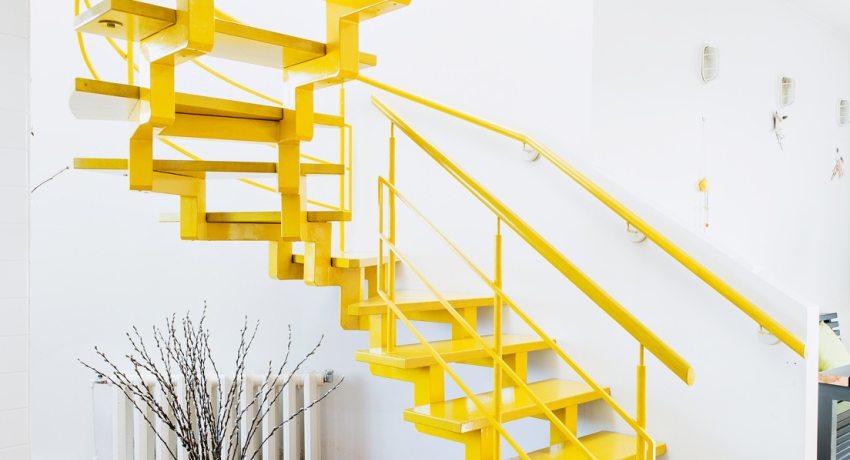
Combined ladder on steel stringers
Content [Hide]
Do-it-yourself stairs to the second floor in a private house. Construction diagram. Types of stair systems
Having made the decision to equip the stairs to the second floor in a private house with your own hands, you need to be prepared for the fact that the installation of structures has its own nuances and requires certain skills. Materials for stairs can be wood, metal, concrete, stone, plexiglass, ceramics, as well as their combinations. By design, there are several types of ladder systems.
Marching stairs in the house to the second floor with your own hands
Marching staircase designs are the most common and common type of staircase construction. These stairs are comfortable to climb and descend. Designs are suitable for spacious rooms where there is no need to save space. They are divided into straight and swivel and can be located near the wall or just in the middle of the room.
It is worth noting that a flight staircase to the second floor in a private house with your own hands (schemes of such structures are often found on the network) is much easier to mount than, for example, spiral types of structures. However, it will take competently calculate the number of steps, marches, the size of the stairs and the space it occupies.
If during the calculation it turns out that the march cannot be limited to 10 steps, it is necessary to divide the staircase into two or more sections, which are connected by a staircase. This staircase design is called rotary. Ladders can be rotated 90 degrees (quarter turn) and 180 degrees (half turn). In order to save space, staircase structures are used, the steps of which are wider from the outer edge than from the inner.
Marching stairs are divided depending on the type of the supporting element. If the steps are installed on a supporting beam with a comb (kosour) from above and when viewed from the side, the ends of the steps are visible, such a ladder is called kosour. The use of such stairs in a particular interior is clearly demonstrated by the photo. The staircase to the second floor with your own hands on the stringer should be sufficiently powerful.
Related article:
|
The stringing design of the stairs consists of two load-bearing beams, inside of which there are grooves for fastening steps. If you look at the stairs from the side, then the steps are not visible: they are hidden behind a bowstring.
Helpful advice! If your interior is dominated by classics and the place for installing the stairs does not have any special restrictions, it is recommended to decorate the room with a solid and solid staircase on bowstrings.
Stairs on kosoura are quite compact, their designs are light and elegant in appearance, they do not visually reduce the space of the room.
Do-it-yourself stairs to the second floor in a private house (diagrams, photos are often put on the Internet) to assemble and install is quite possible, following the recommendations and advice of professionals.
DIY spiral staircase design to the second floor
Spiral stairs are of interest from the point of view of the attractiveness of the design. Such designs in various designs look spectacular and can decorate any interior. They can connect room levels both inside the house and from the outside. It all depends on the architectural features and personal preferences of the cottage owners.
Numerous photos of stairs to the second floor in summer cottages confirm the advantages of spiral staircases in cramped conditions. The design of a spiral staircase can be easily entered on an area of 1.5x1.5 m. A significant disadvantage is that it is impossible to lift large-scale furniture and equipment up such a staircase, and it is possible to move along it only one by one.
Spiral staircases are most often made of wood, metal, or can be combined from these materials. Do-it-yourself installation of a spiral staircase (drawings and calculations are quite complicated) requires accurate measurements and taking into account all the design features of such a staircase system. You can ask how a wooden spiral staircase to the second floor was made with your own hands on the corresponding thematic sites, where all the necessary schemes and calculations are presented.
Helpful advice! So that you do not have to bend down when moving along a spiral staircase, you should ensure that the distance between the turns is not less than two diameters of the staircase.
Staircase systems on bolts
The model of the ladder on the bolts assumes its placement along the wall, since the steps are fixed on the wall using special fasteners (bolts). On the other side, the steps are attached to railings, which act as the main supporting element of the structure. Such stairs are visually light, although they are highly reliable. They are almost invisible and help preserve sunlight.
Stylistically, the staircases on the bolts look quite modern, but they will be appropriate in any interior. The steps of the stairs do not creak, withstand heavy loads and are designed to move loads along them.
Combined types of stairs
Staircase in the house, including in its design sustainer and screw elements, is called combined.Such a combination is able to give the stairs unusual aesthetic and functional qualities. In the designs of combined stairs, you can combine straight and rotary flights, screw elements in different sequences depending on the required layout.
Materials for combined systems are selected based on personal preference and compatibility with the overall style. Kosoura can be steel, concrete or wood, steps - metal, wood, glass. Railing for stairs in a private house in a combined version, they can also be made of wood and metal. Sometimes flights of stairs are faced with plasterboard plates.
Self-installation of the combined structure makes it possible to obtain an individual staircase that has no analogues. Of the limitations in the device of a combined system, there may be a lack of space, a complex layout and labor-intensive installation. The cost component plays an important role. So that it does not subsequently turn out that the installed staircase occupies the main part of the room, accurate measurements and calculations are needed. You can create a 3D model of stairs that visually represent the structure in your room.
Do-it-yourself staircase installation on the second floor, video installation instructions
For self-production and installation of the ladder, we will choose the marching type of ladder. The elements of the products are easy to manufacture and their assembly is relatively easy.
For the manufacture of stairs to the second floor required:
- timber with a thickness of at least 40 mm for the manufacture of steps;
- board 40 mm wide;
- beam 30-40 mm for the horizontal surface of the step (tread);
- beam 30 mm for risers;
- bar for stringers 50x250 mm;
- screws for fastening elements;
- handrails, balusters, railings.
Handrails and balusters for stairs to the second floor in a private house can be purchased in the appropriate stores. The prices for them are quite reasonable: the purchase of these elements will give you the opportunity to gain time and purchase solid quality products. After all, the appearance of the stairs largely depends on the elegance of these elements.
Let's try to figure out how the stairs to the second floor were made in the form of a marching wooden structure on kosoura.
Scheme and calculation of the flight staircase
To calculate the number of steps, the height of the staircase is divided by the selected step height, rounded up to the larger value of the obtained value. The base length is calculated by multiplying the number of steps by their specified width.
Helpful advice! If you find it difficult to determine the length of the flight of the stairs mathematically, you can make a schematic drawing in compliance with the scale and determine by measuring the length of the flight and the resulting angle of inclination of the stairs.
Manufacturing and fastening of structural elements of the stairs
For the manufacture of stringers, you will need a high-quality dried board. Species such as beech, pine or oak are suitable. First, according to the calculations, a layout of the element is made of cardboard or plywood. Above and below on the stringer, grooves are arranged for attaching it to the support bars. After that, the workpieces are ground.
The finished stringers are attached at the bottom and top to the support bar. Control of the correct installation is determined by the building level.
For steps, a 40 mm thick board is used. The width of the steps corresponds to the selected width of the stairs, taking into account the railings As a rule, the width of the steps ranges from 0.7 to 1.2 m. For the risers, a board with a thickness of 30 mm, a width equal to the height of the step, and a length equal to the selected width of the stairs is used.
The method of fastening the steps is as follows: first, the riser is attached, and then the steps. So that later when moving up the stairs a characteristic creak is not heard, all slots and connecting lines are filled with glue for joinery.
Balusters are mounted taking into account one piece for each step. In this case, the first and last balusters will be supporting, decorative are located between them. Fastening takes place by means of the same screws, the attachment points are masked with plugs. Railings attached to the balusters from the bottom side. When the structure is ready, it is carefully polished and varnished or painted in several stages. Each layer is allowed to dry well.
For example, you can see a photo of stairs in the country house to the second floor with your own hands.
When installing a staircase in a house yourself, it is necessary to develop a clear diagram of the planned structure and take into account all useful recommendations. Ladder systems can be of various designs: spiral, marching or complex combined configuration. Non-trivial shapes of handrails and balusters, finishing of steps made of various modern materials - all these elements will create a unique structure that will become a real masterpiece in the interior of your home.


